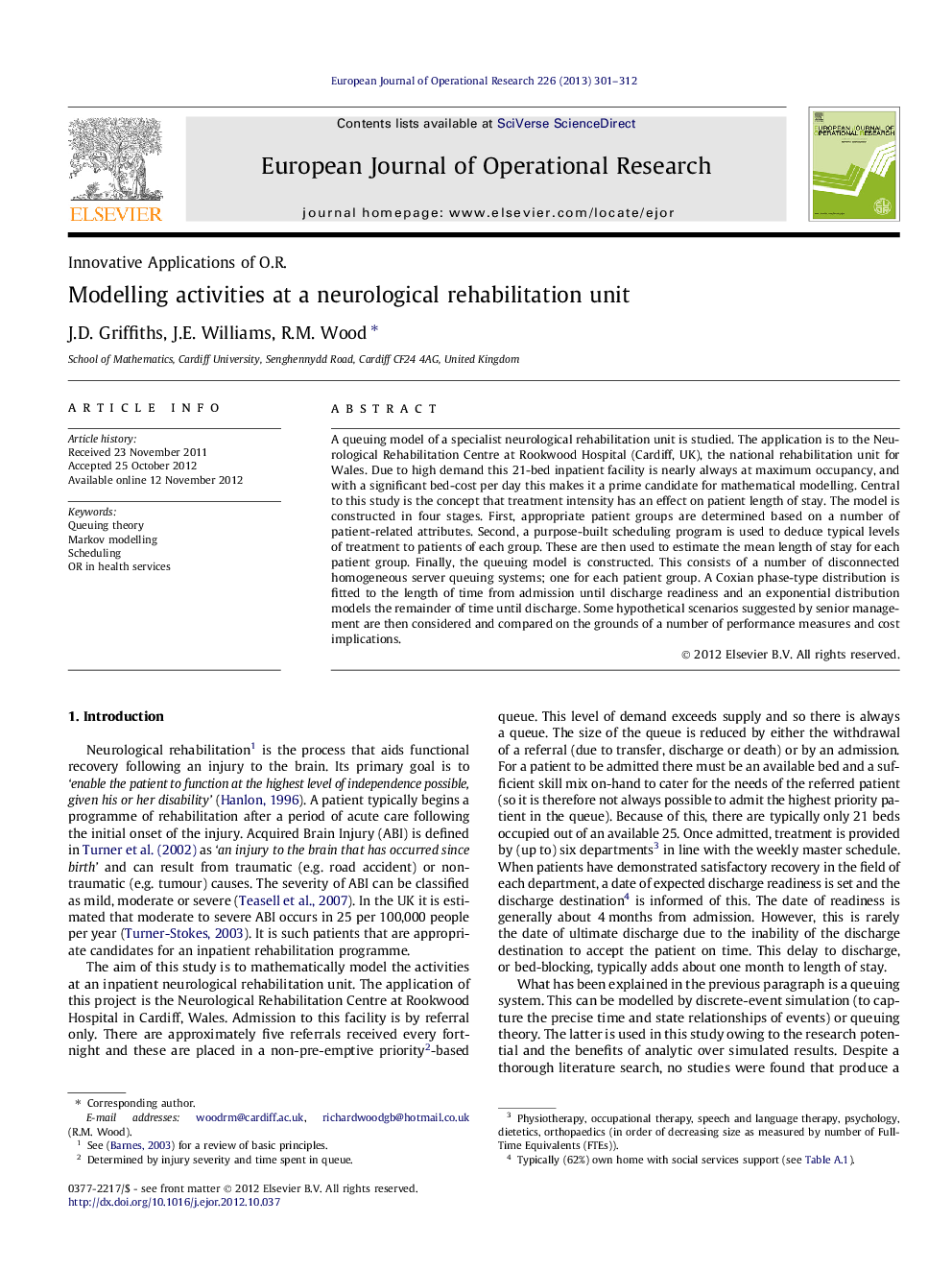| Article ID | Journal | Published Year | Pages | File Type |
|---|---|---|---|---|
| 479995 | European Journal of Operational Research | 2013 | 12 Pages |
A queuing model of a specialist neurological rehabilitation unit is studied. The application is to the Neurological Rehabilitation Centre at Rookwood Hospital (Cardiff, UK), the national rehabilitation unit for Wales. Due to high demand this 21-bed inpatient facility is nearly always at maximum occupancy, and with a significant bed-cost per day this makes it a prime candidate for mathematical modelling. Central to this study is the concept that treatment intensity has an effect on patient length of stay. The model is constructed in four stages. First, appropriate patient groups are determined based on a number of patient-related attributes. Second, a purpose-built scheduling program is used to deduce typical levels of treatment to patients of each group. These are then used to estimate the mean length of stay for each patient group. Finally, the queuing model is constructed. This consists of a number of disconnected homogeneous server queuing systems; one for each patient group. A Coxian phase-type distribution is fitted to the length of time from admission until discharge readiness and an exponential distribution models the remainder of time until discharge. Some hypothetical scenarios suggested by senior management are then considered and compared on the grounds of a number of performance measures and cost implications.
► A queuing theoretic model of a neurological rehabilitation unit is constructed. ► Balking, reneging and blocking are accounted for in an analytical phase-type model. ► Service rates (through length of stay) are dependent on the intensity of treatment. ► Assignment of treatment is taken over by an automated scheduling program. ► Relevant hypothetical scenarios are evaluated on throughput, waiting time and cost.
